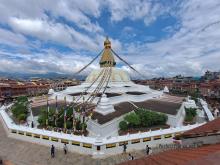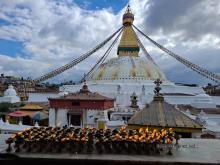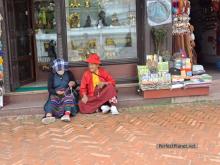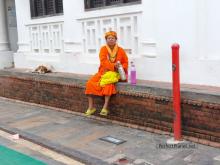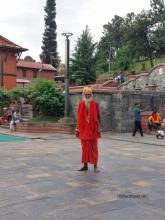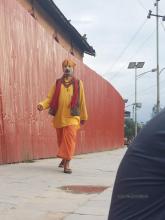It is 5 am when Sonam knocks on the door. We are very fortunate that the day is completely clear and we will have no problems with the plane.
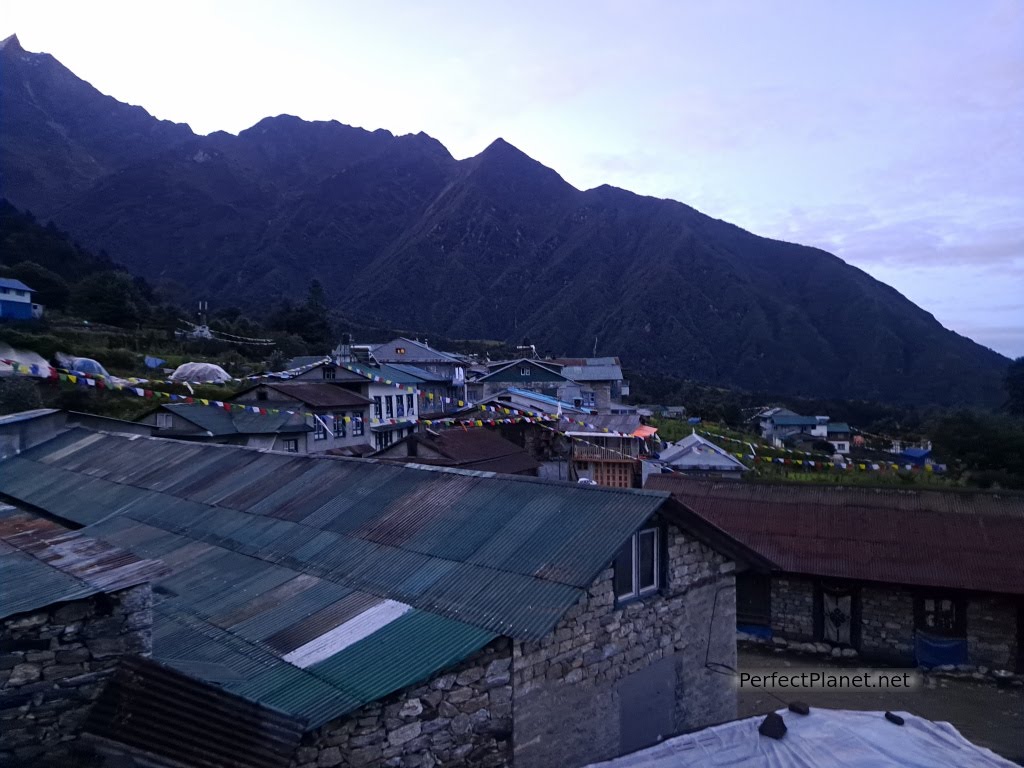
Sunrise at Lukla
We have a quick breakfast of eggs with toast and black tea. Chiiring arrives, we say goodbye to Sonam's family and leave for the airport.
Today is a day full of emotions, on the one hand we have finished the trekking and we are happy but on the other hand we say goodbye to this place and to these wonderful people who have accompanied us all these days.
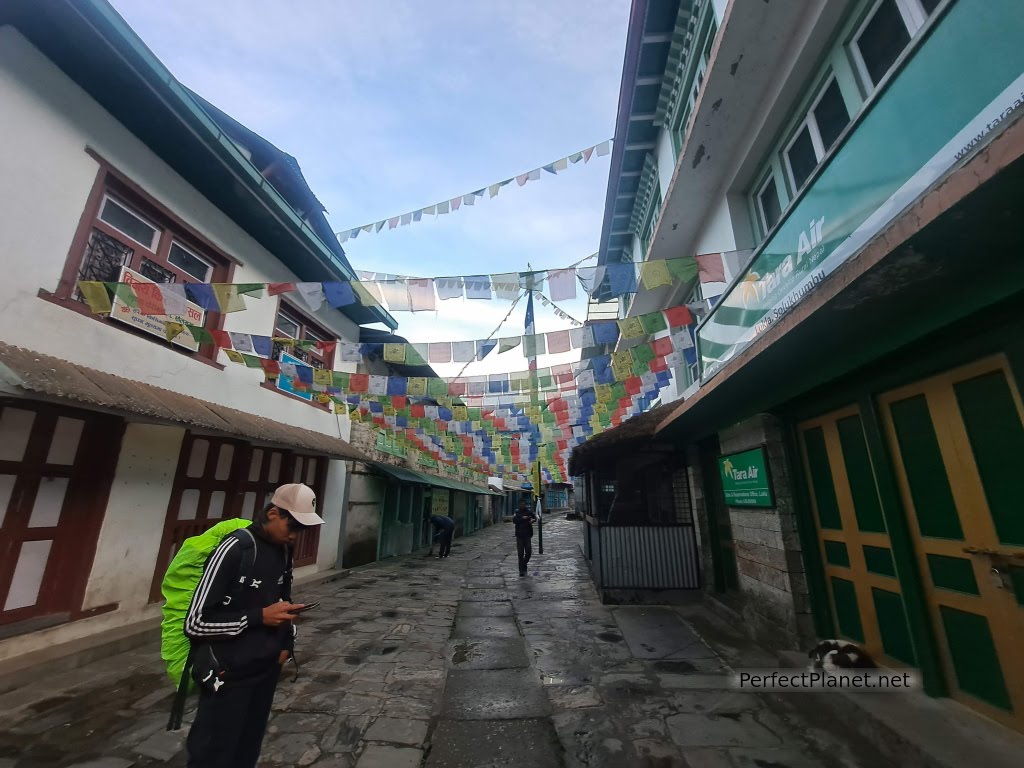
Lukla
I cry at the airport as we say goodbye to Sonam and Chiiring, exceptional travelling companions who will be missed. We wish them all the luck in their new project as a trekking agency and you can find them on their insta account the_monkey_travels.
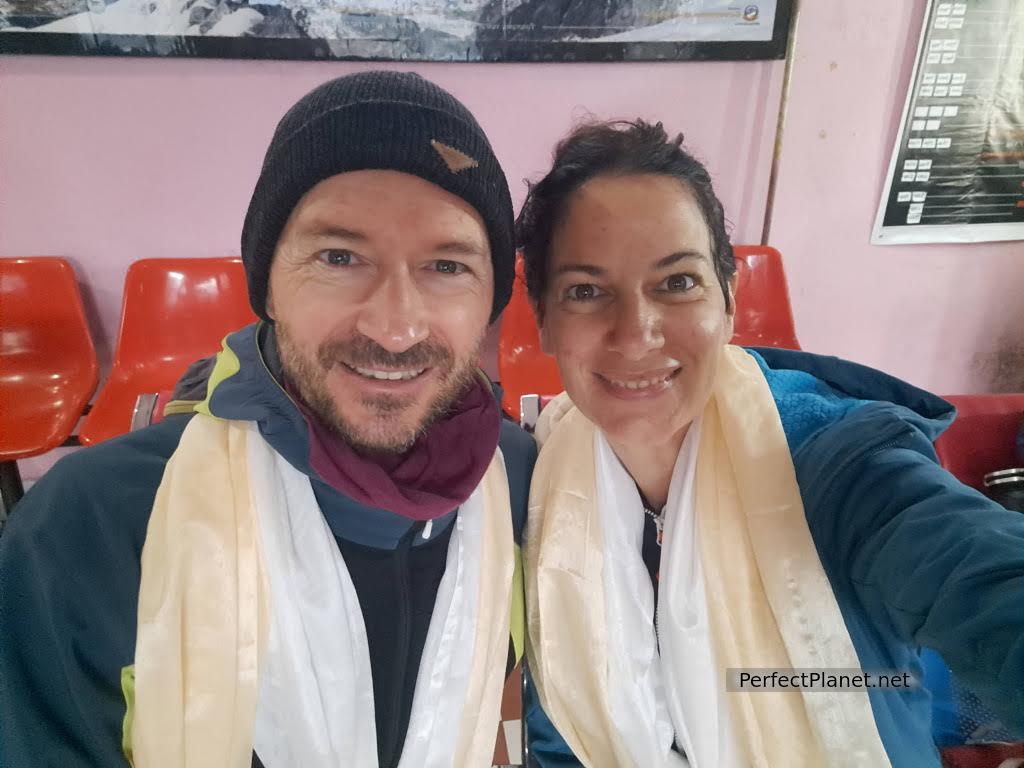
We
In appreciation, Sonam and Chiiring, give us two khatas, one white and one gold, as a gesture of farewell wishing us a safe journey.
The khatas or katas are ceremonial scarves in the form of a scarf that are given to family and friends as a gesture of welcome, expressing thanks and wishes for happiness. As a farewell gesture, it symbolises bon voyage and good luck.
Lukla airport is very small, we say goodbye to Sonam and Chiiring and enter the waiting room where we see Miguel nervous. His flight to Spain leaves tomorrow and he has to go down to Kathmandu today. He is going to be lucky because it couldn't be a clearer day.
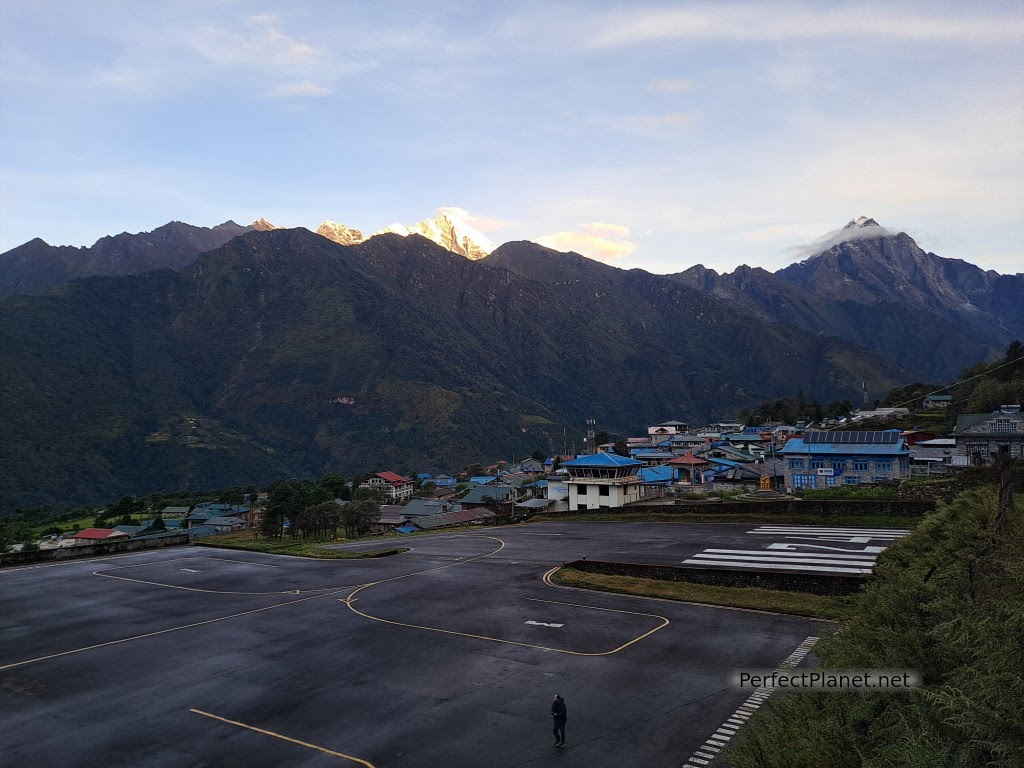
Lukla airport
After a while our plane arrives, very punctually, it's 6.30 a.m. As we board, a lot of planes start arriving. As we board the plane a lot of planes start to arrive, we count up to 7. According to what they tell us, they have not received tourists for several days and they have to take advantage of the excellent weather conditions today.
In 35 minutes we are back in Kathmandu. Soman tells me that the taxi driver from the first day will pick us up. We pick up our backpacks and I see that he has been calling us. In 5 minutes he arrives and brings us to our hostel.
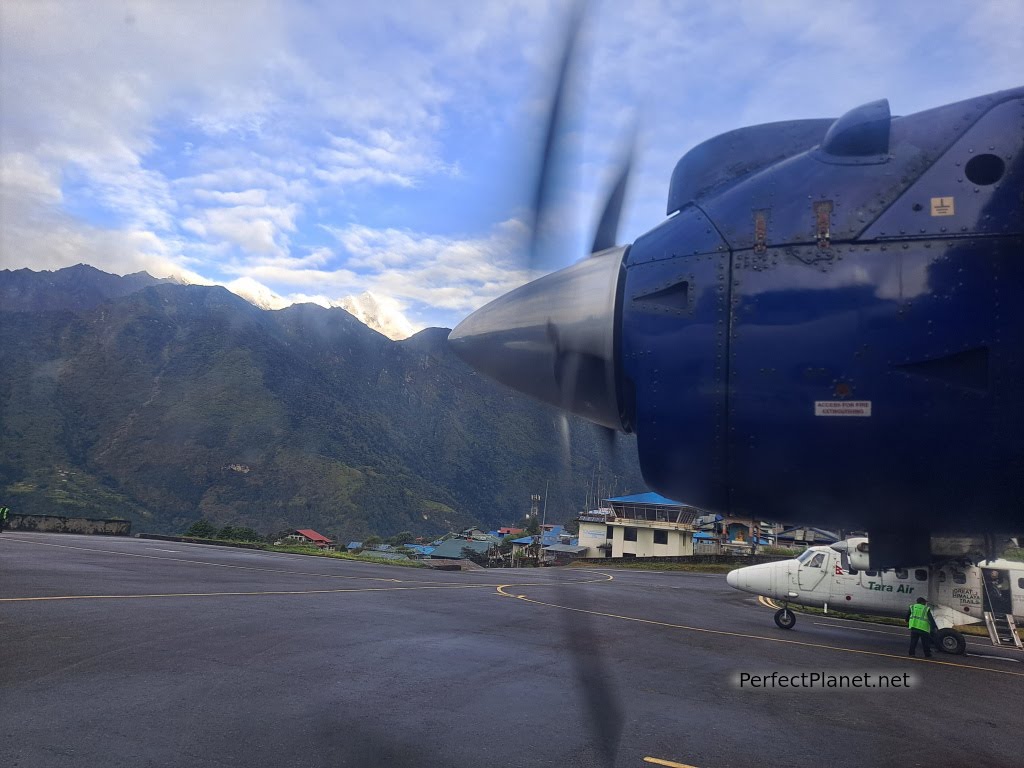
Aircraft
Rabina welcomes us with joy. We go for breakfast at our favourite bakery, Darjeeling blue tea (brutal), a croissant and a Danish (cake with cream and cinnamon), all freshly made, it's incredible.
We go back to the hostel and while we wait for our room we go up to the roof to enjoy the view.
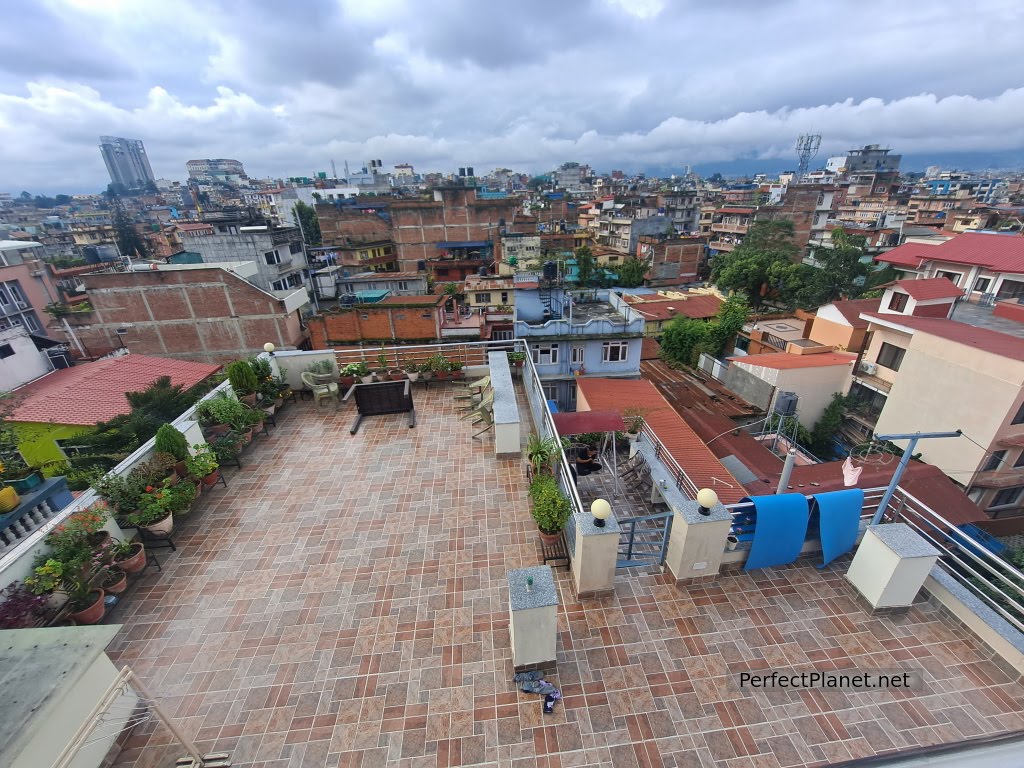
Our hostel
We decide to spend today visiting the temples of Boudhanath and Pasupatinath.
Rabina advises us to take a taxi which should not cost more than 500 rupees. We go to a taxi stand nearby but don't get a taxi for that price, so we go out to the main street and almost without negotiating we get a taxi to take us to Boudhanath.
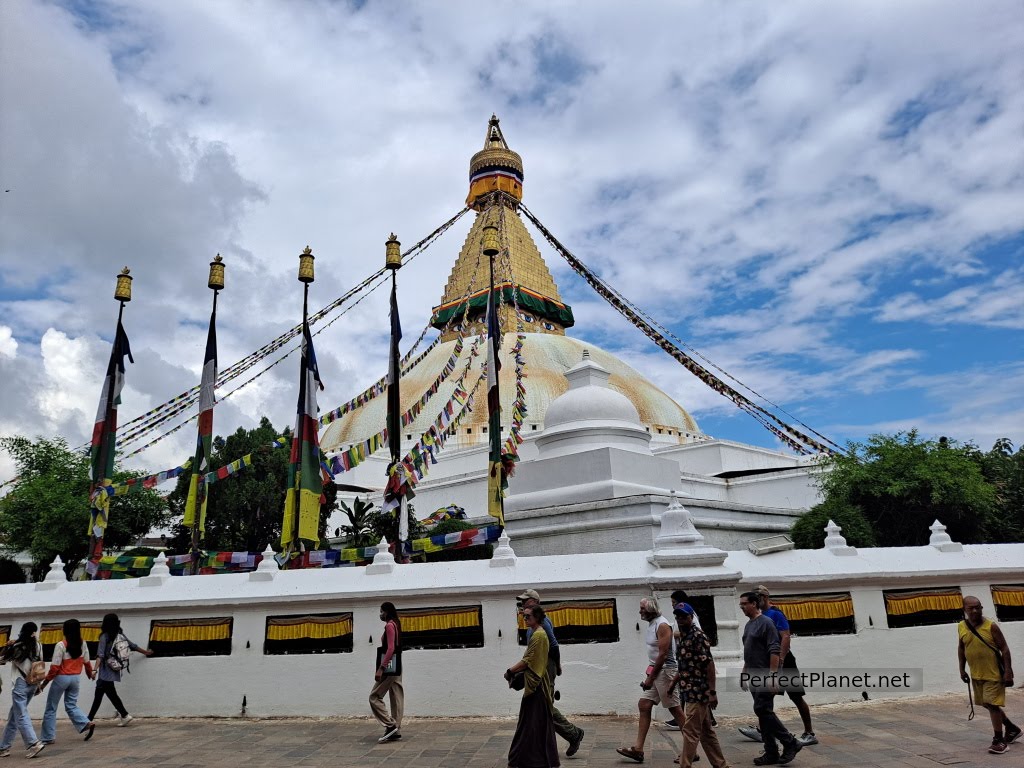
Boudhanath
Tip. The best time to visit Buddhist and Hindu temples is early in the morning or late in the day, when the faithful make their pujas or offerings.
In twenty minutes we reached the Boudhanath or Bodhnath temple.
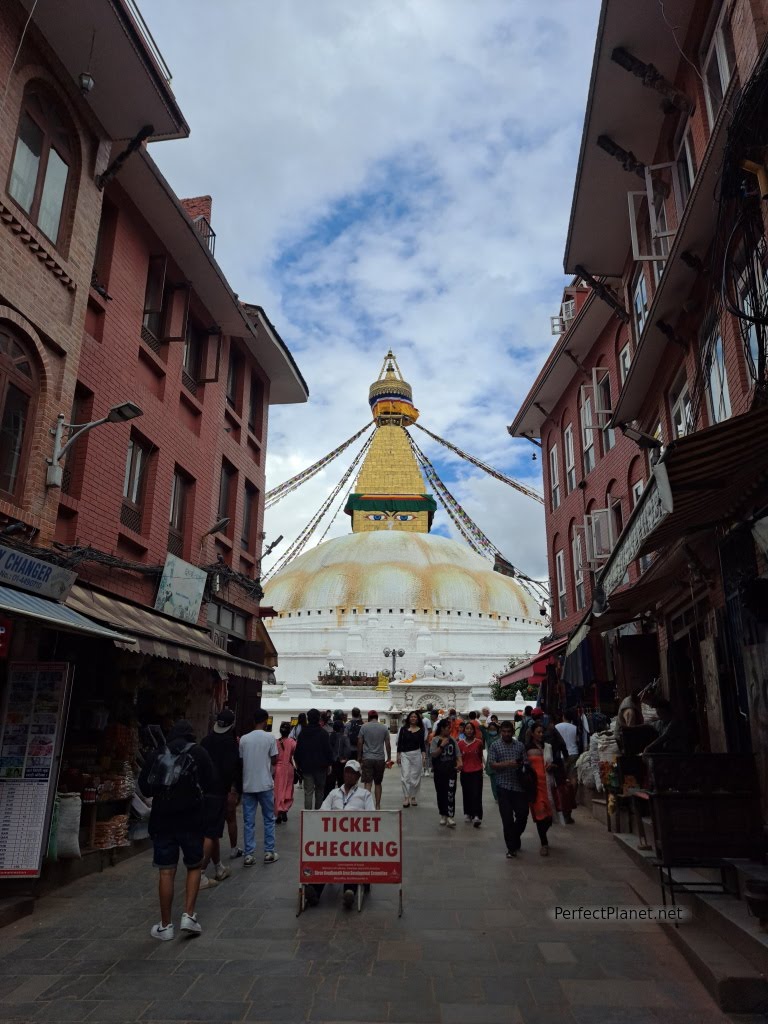
Boudhanath
Boudhanath is one of the holiest Buddhist sites in Nepal and is an important pilgrimage centre. Its stupa is one of the largest in the world and probably one of the most beautiful. It has been a UNESCO World Heritage Site since 1979.
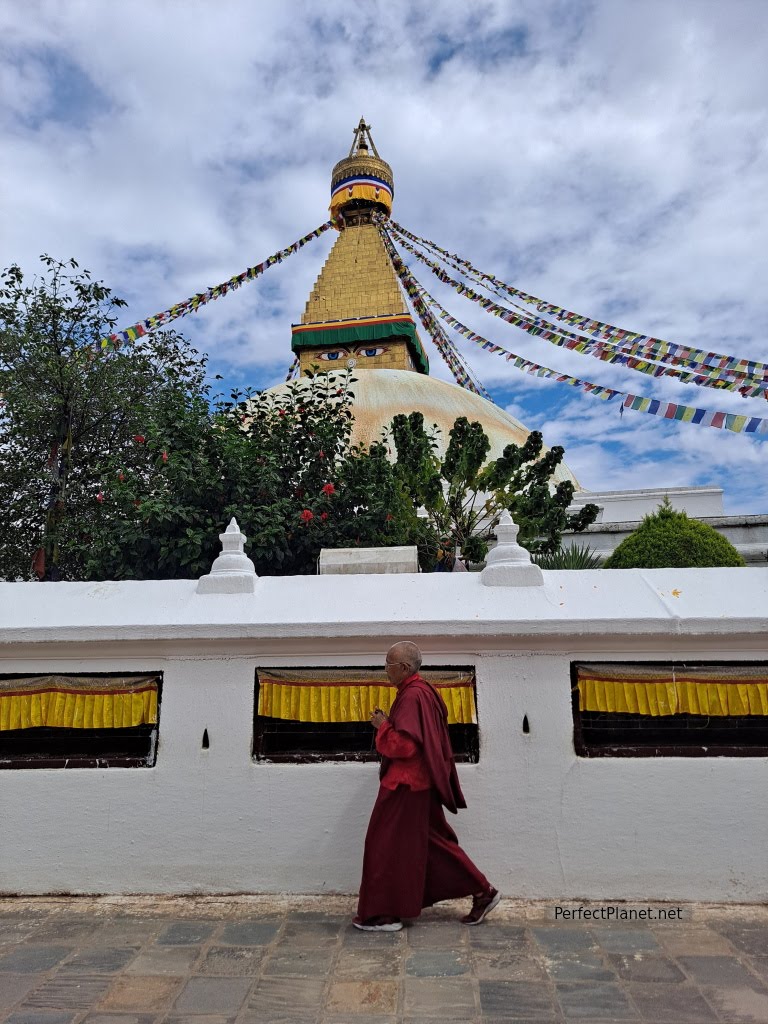
Boudanath
Stupas are Buddhist constructions where the relics of the Buddha were originally kept.
On the vault of the Boudhanath stupa we can see the eyes of the all-seeing Buddha and the number 1 in Nepali, symbolising unity, depicted on the four faces of the upper tower oriented to the four cardinal points.
The Boudhanath stupa is 100 metres in diameter and almost 40 metres high. It consists of a plinth representing the earth, a dome representing water, the tower symbolising fire, the 13 upper rings representing the path to enlightenment, and the upper umbrella and prayer flags symbolising emptiness.
108 Buddha statues and prayer wheels surround the stupa which you have to turn clockwise.
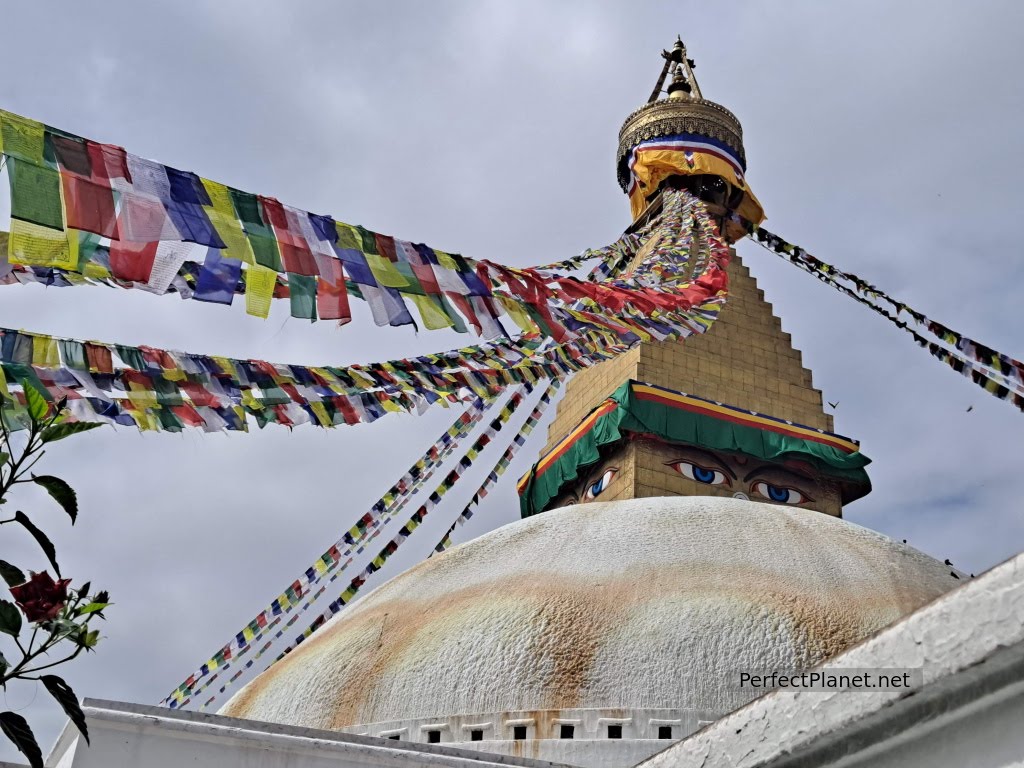
Boudhanath
It is worth going inside (although you can't take photos) to look around the small temple at the north gate.
How much time you need
You can spend an hour or the whole afternoon. Time flies when you are in Boudhanath.
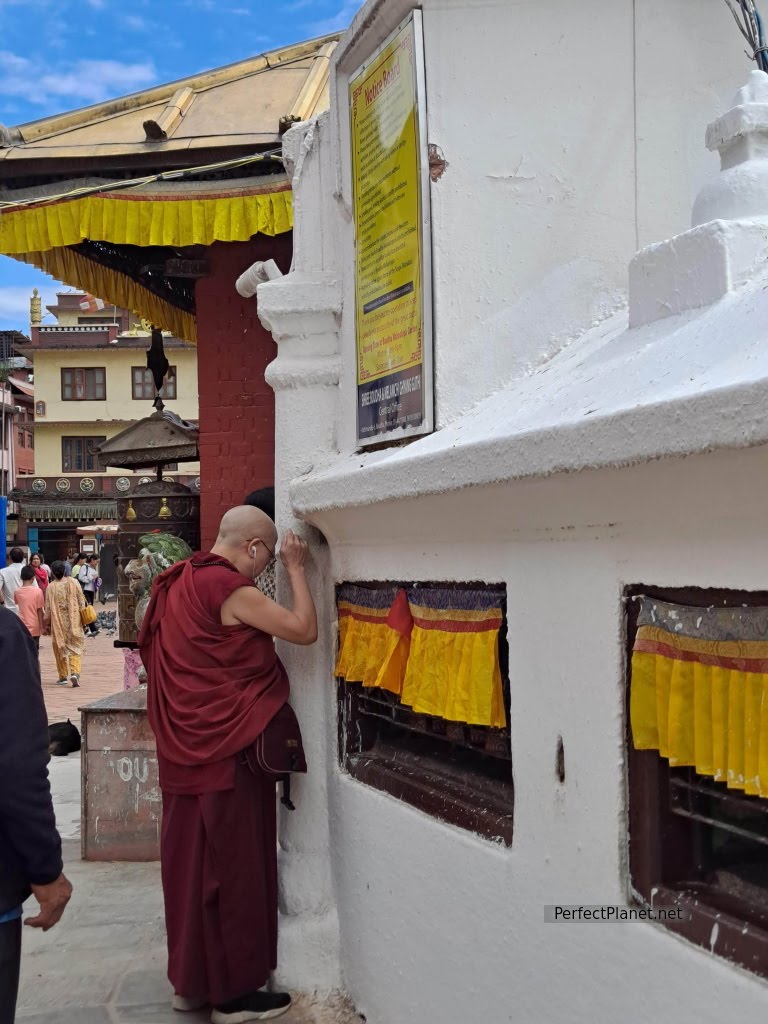
Boudhanath
How to get there
Boudhanath is located about 10 kilometres from Thamel. We went by taxi which cost us 500 rupees from our hostel. The cheapest way is by bus which you can take from Ratna Park.
The entrance fee is 400 rupees per person. It is located in a circular square with several entrances surrounded by buildings with handicraft shops, traditional Tibetan products, restaurants and hostels.
It is worth going up to one of the rooftops to admire the dimensions of the temple. We took the opportunity and ate some momos at Khasyor Cafe Rooftop View, momos, soft drink and water 550 rupees.
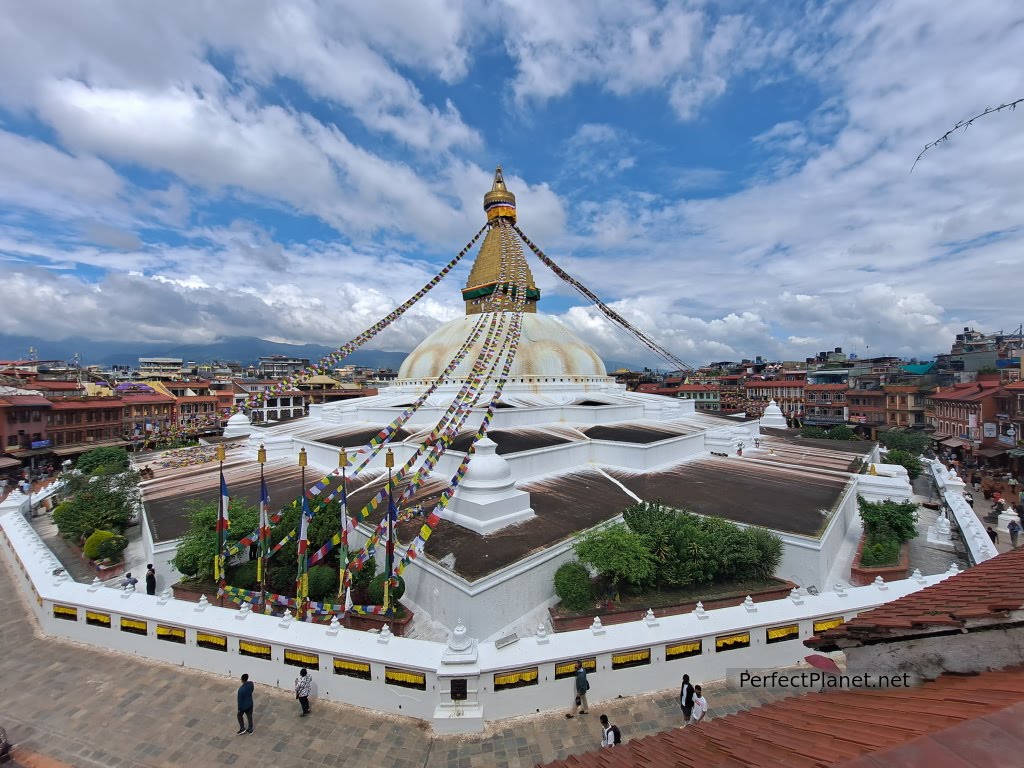
Boudhanath
After China's invasion of Tibet, many Tibetan exiles settled in Boudhanath and several monasteries or gompas have been built around the shrine.
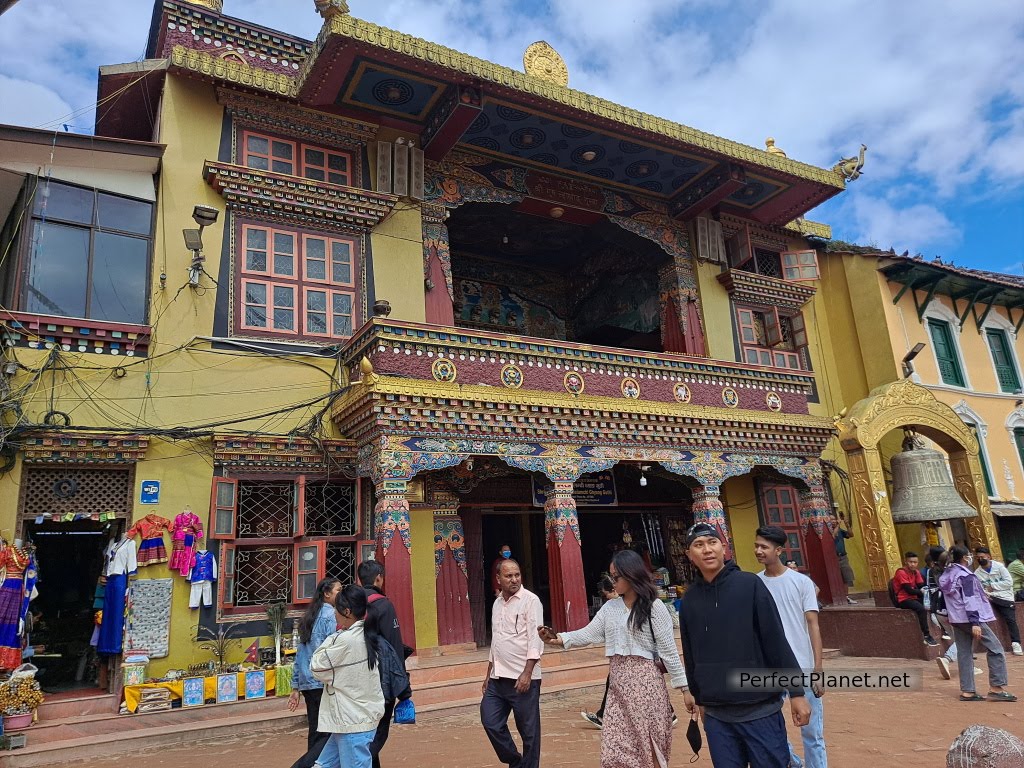
Tamchen Gompa
There are two of them, Tamchen Gompa, located next to the stupa, and Shechen Gompa, a five-minute walk away.
At Tamchen Gompa monastery you can enjoy its wall paintings and a large prayer wheel. We recommend going up to the first floor to enjoy the view of the stupa and the offerings that are made.

Boudhanath from Tamchen Gompa
The Shechen Gompa Monastery is located just a 5-minute walk away. This monastic complex is huge and consists of several main temples. When we arrived at the main temple the monks were reciting mantras and playing instruments and when they finished they were answered by other monks in a smaller temple. It was beautiful. Photography is not allowed. Entrance is free.
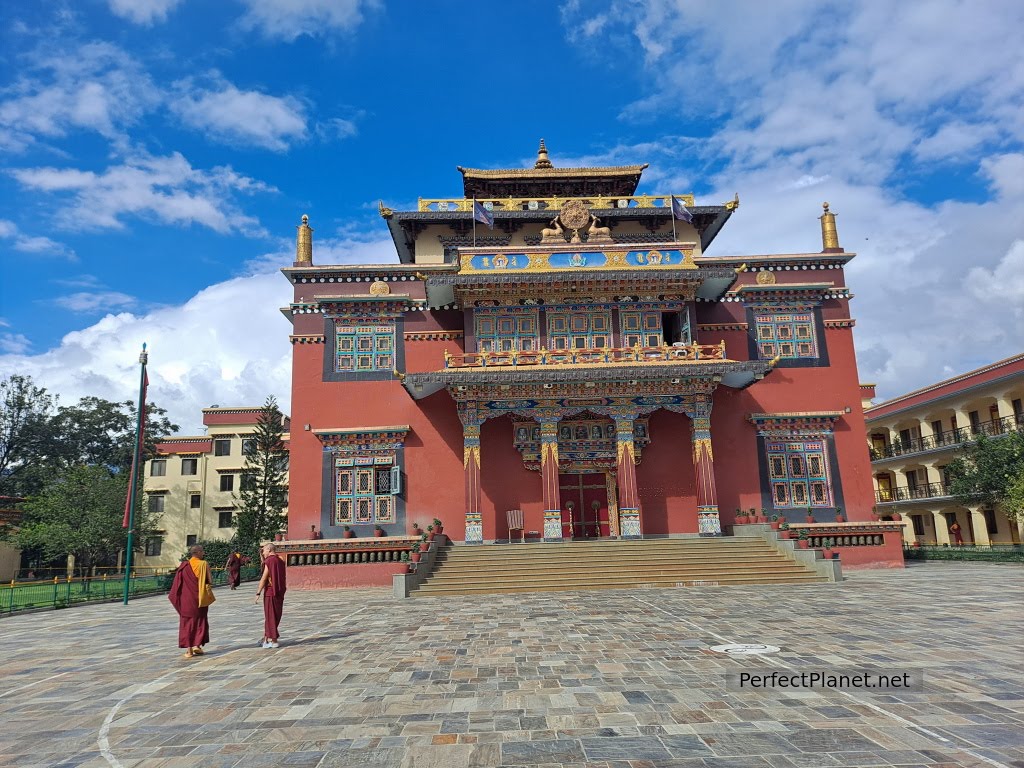
Shechen Gompa
We leave the monastery and walk to the Hindu temple of Pashupatinath. It takes twenty minutes to reach the north entrance.
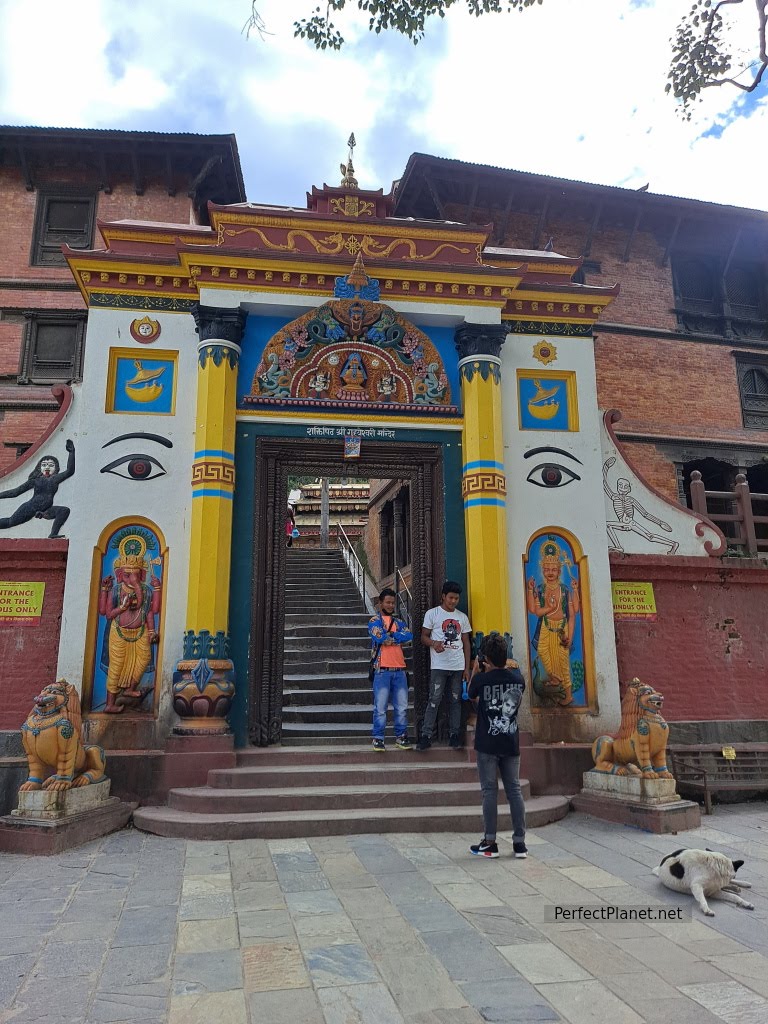
North gate
Pashupatinath is one of the oldest and most important surviving Hindu temples dedicated to Shiva, transformed into Pashupati, in the world. It is also one of the holiest pilgrimage destinations for this community. It was declared a UNESCO World Heritage Site in 1979 as was Boudhanath.
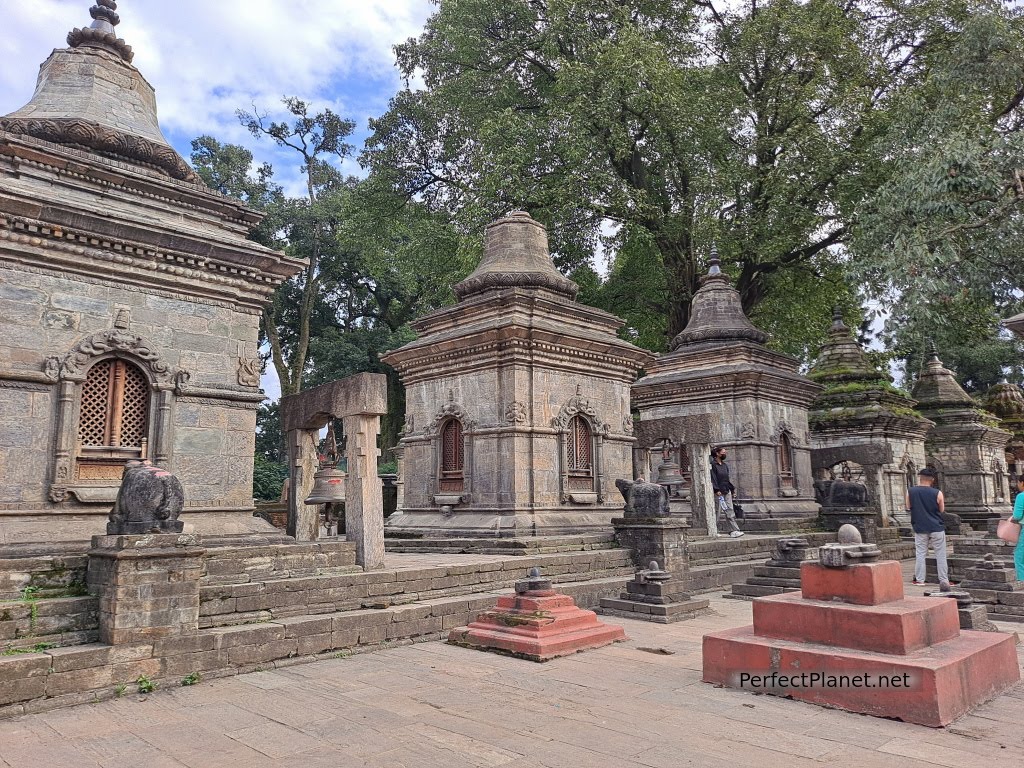
Pashupatinath
In the past, this complex of buildings was off-limits to non-Hindus, and although you can visit it today, not all of its buildings are open to non-Hindus. Many of its temples are relegated to Hindus only, such as the Guhyeshwari temple or the main temple of Pashupatinath, in which the sculpture of a large brass bull located at the entrance of the temple stands out. In the Hindu religion the bull is the vehicle of Shiva meaning lord of the animals.
Pashupatinath is bathed by the holy river Bagmati, which becomes more unreal as the sun sets. Every day the crematoriums on the ghats by the river are lit as families mourn and bid farewell to their loved ones. A place to reflect on life and death.

Pashupatinath
We enter through the gate next to the Guhyeshwari temple, the entrance fee is 1,000 rupees per person. We climbed some stairs parallel to the temple to reach a wooded area next to which there are several small 11th century temples.
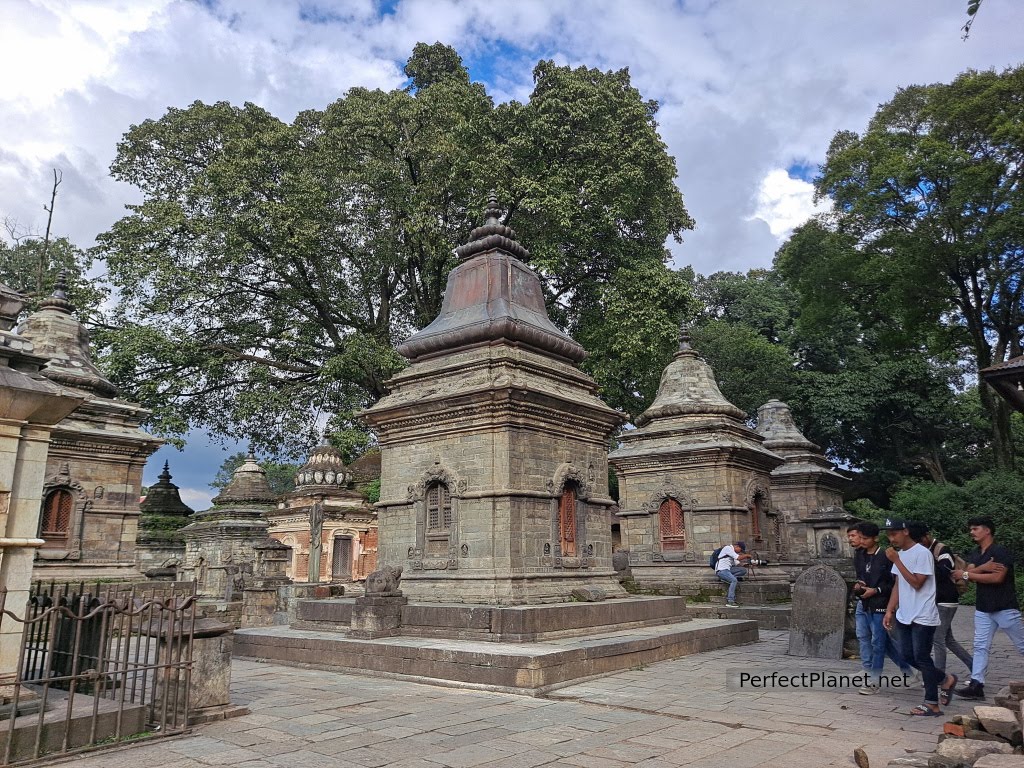
Pashupatinath
I had never felt uncomfortable in Nepal but one of the Hindu visitors in the complex follows me and stares at me for several minutes until he finally disappears into the trees.
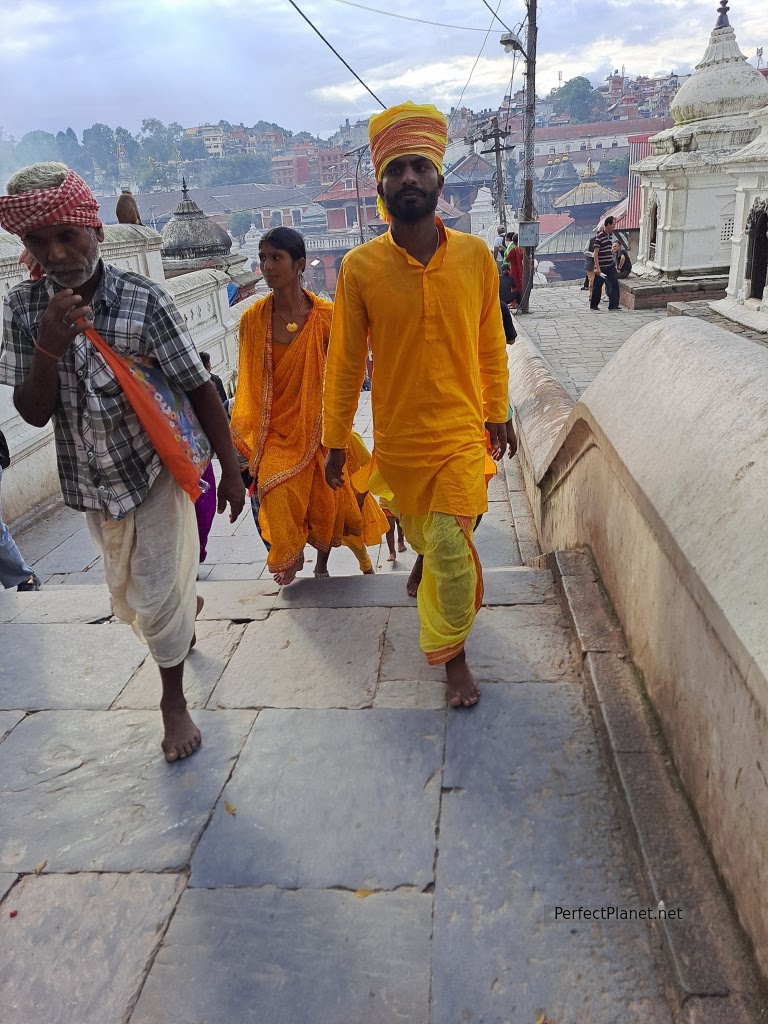
Pashupatinath
We continue to the Bagamati river area. We go down the stairs, music starts to play and a lot of people dance and sing around a group of Hare Krishna. Several women offer us to put on the tika (colour mark) while groups of children run around, saddhus (holy men) invite you to sit with them to purify yourself and bulls run around chased by dogs. A strange mixture of colour and feeling is in the air.
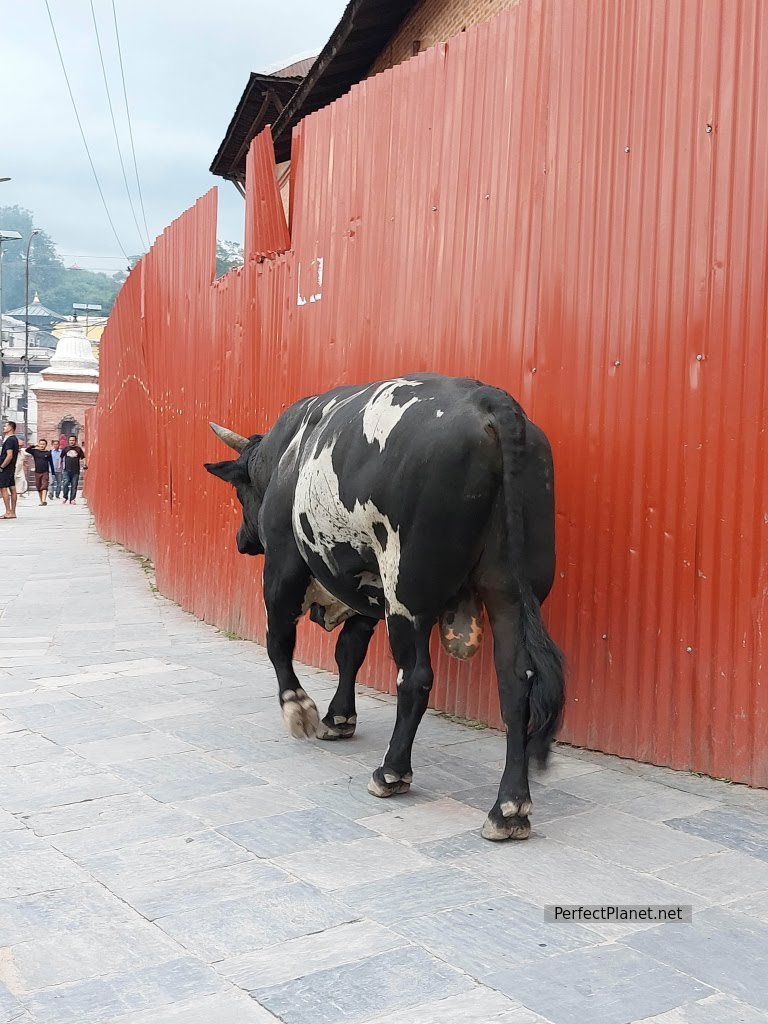
Bull
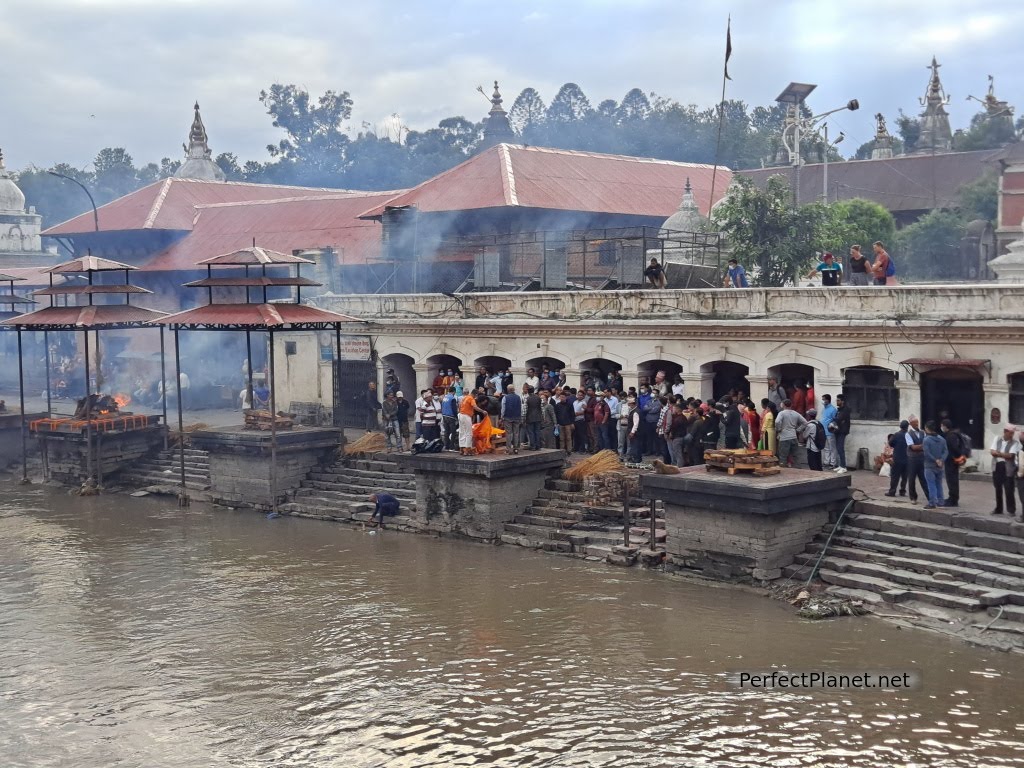
Pashupatinath
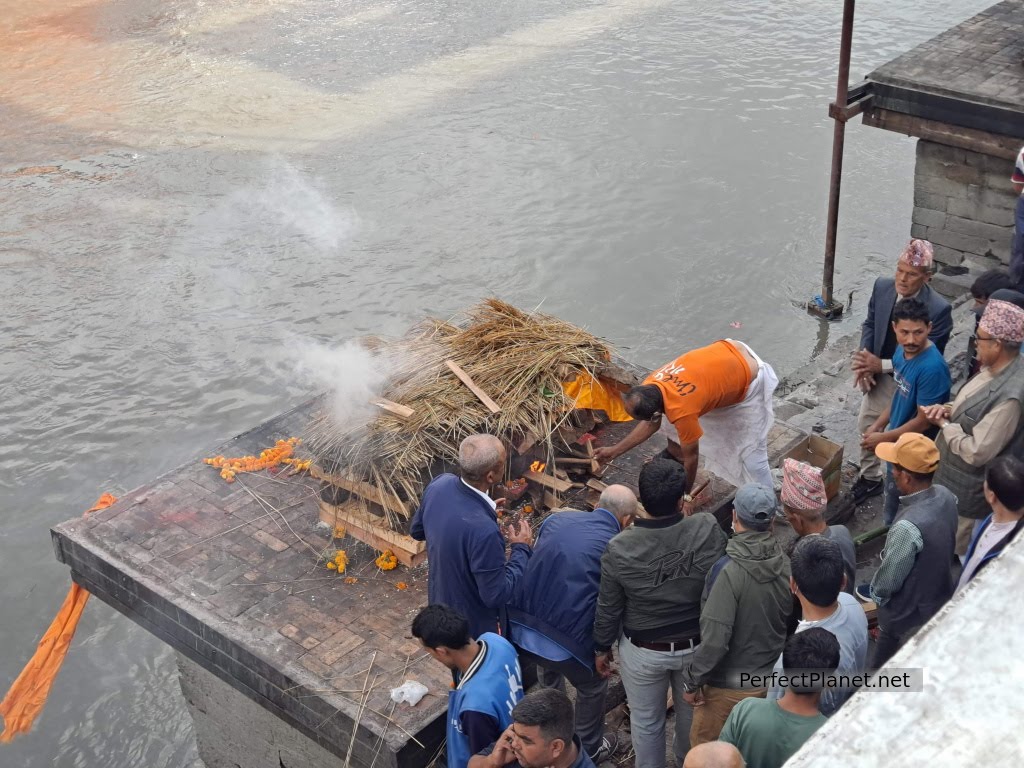
Pashupatinath
At the river, families wash the bodies of the deceased and wrap them in a shroud while some of the family members purify themselves in the river before bidding farewell to their relative. They place garlands of flowers on the body and carry it on their shoulders to one of the gaths, place it on the pyre, cover it with wet straw (to create an oven effect) and light it.
In the past, the sati tradition required the wife of the deceased to be burnt alive next to her husband, but fortunately this custom has disappeared.
For hours the bodies burn under the flames until they disappear completely and the remains are thrown into the river.
During the 2015 earthquake, there were not enough cremations to go around.
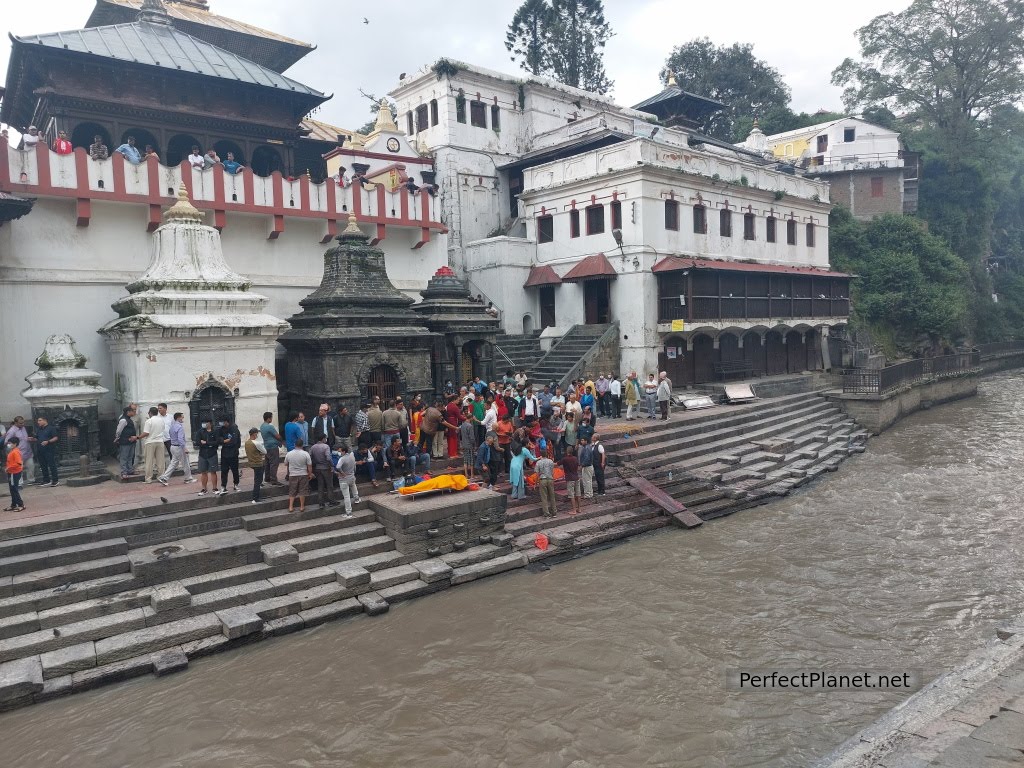
Pashupatinath
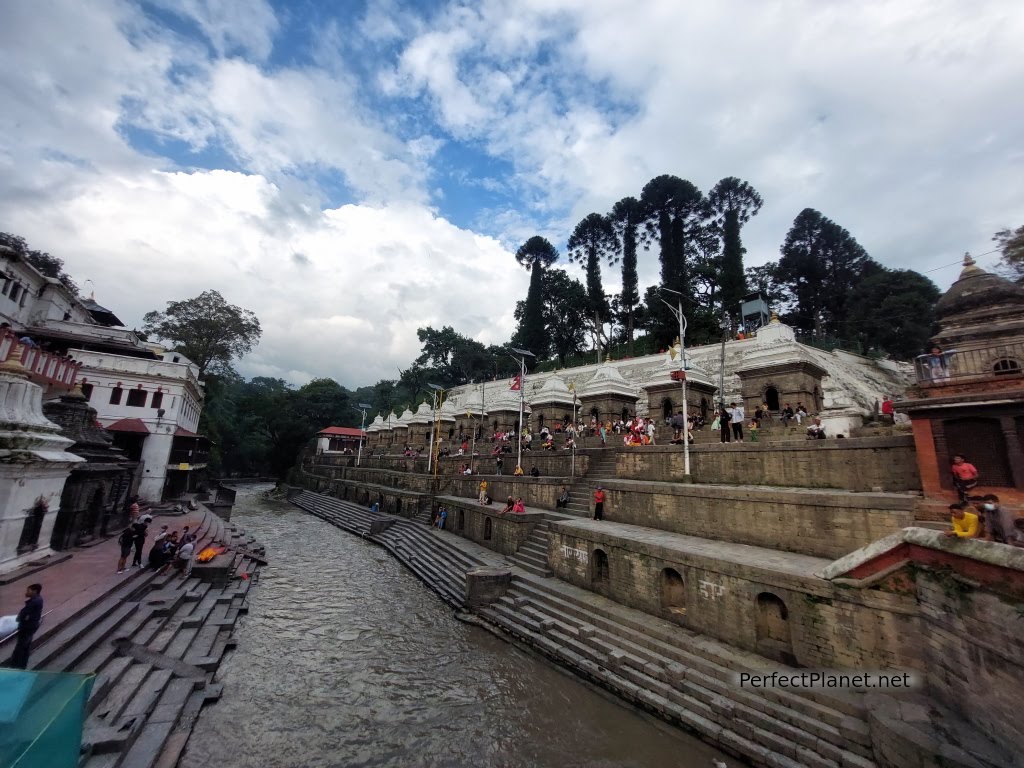
Pashupatinath
In the main temple of Pashupatinath, the figure of a nandi, a huge brass bull facing the main altar, stands out. You can only approach the door to look as we are not allowed to enter.
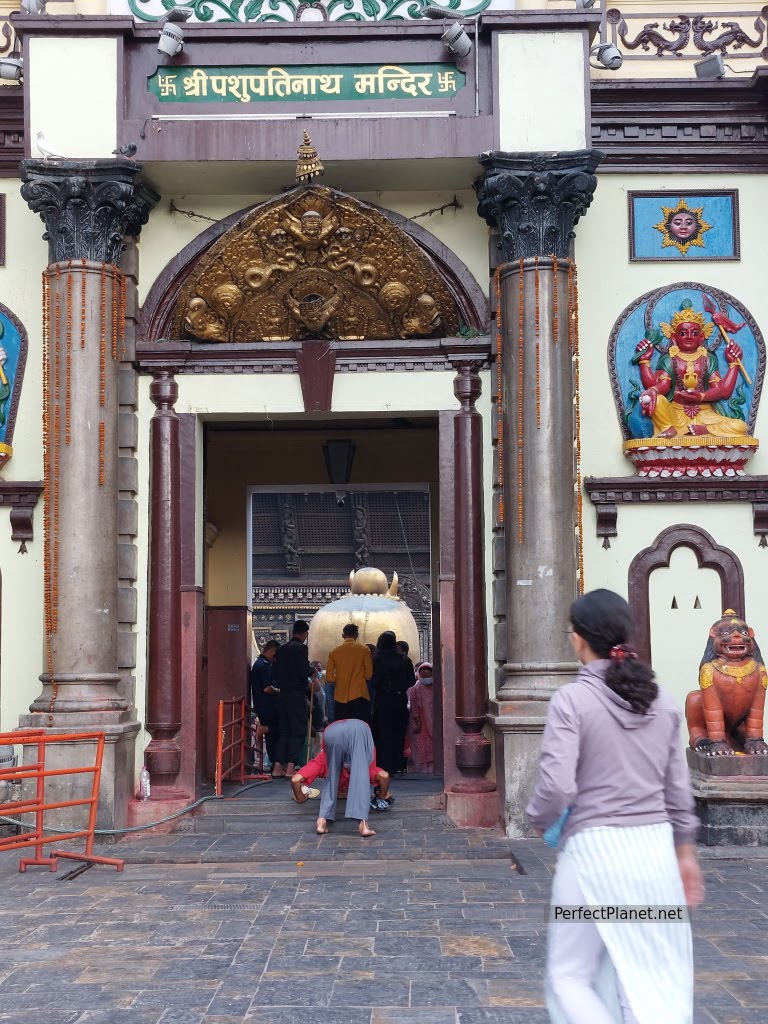
Pashupatinath
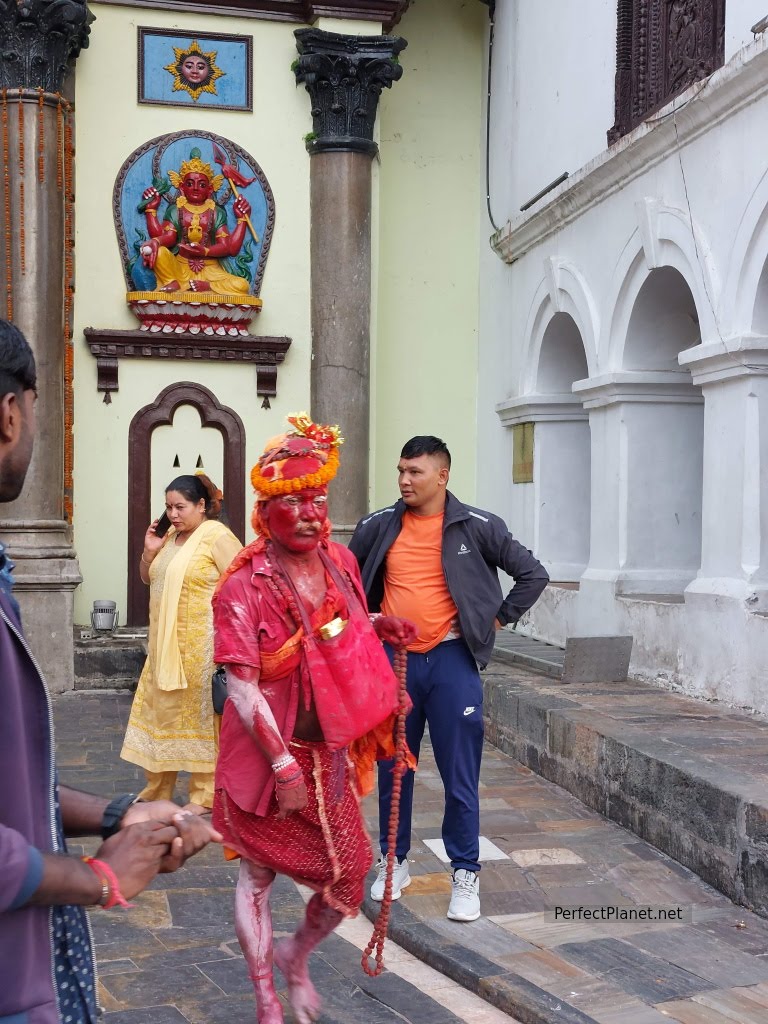
Pashupatinath
Night falls, it is six o'clock in the evening and a ritual begins, as it does every day, the Aarati. A purifying bath that the devotees take in the river where they make offerings, such as throwing milk and flowers into the Bagmati. Three priests guide them swinging oil lamps accompanied by music and chanting.
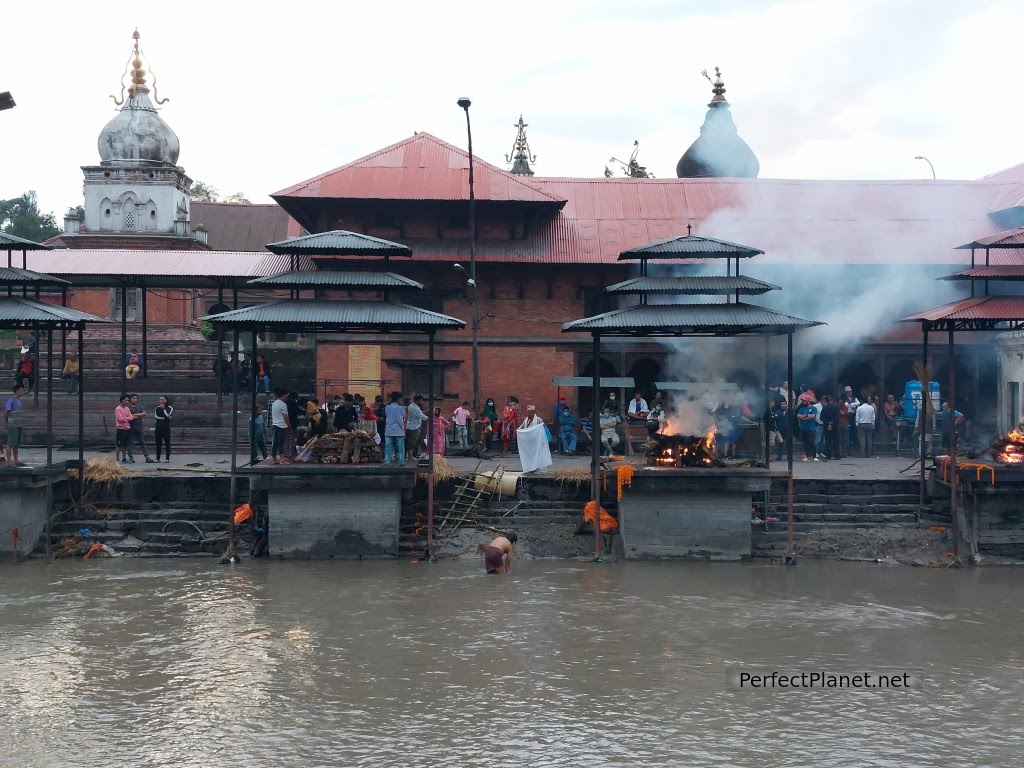
Pashupatinath
How to get there
If you are in Boudhanath you can walk there, it takes about twenty minutes to the north entrance of the complex or you can take a taxi. Buses run from Thamel from Ratna Park.

Pashupatinath
Pashupatinath will not leave you indifferent, it is one of those must-see places if you visit Kathmandu. If you've travelled to India you've probably been somewhere similar.
We take a taxi back to Thamel for dinner. We have dinner at Gaia restaurant, hummus, chicken wings and mint tea. All delicious. The restaurant has a nice courtyard and a very pleasant atmosphere.
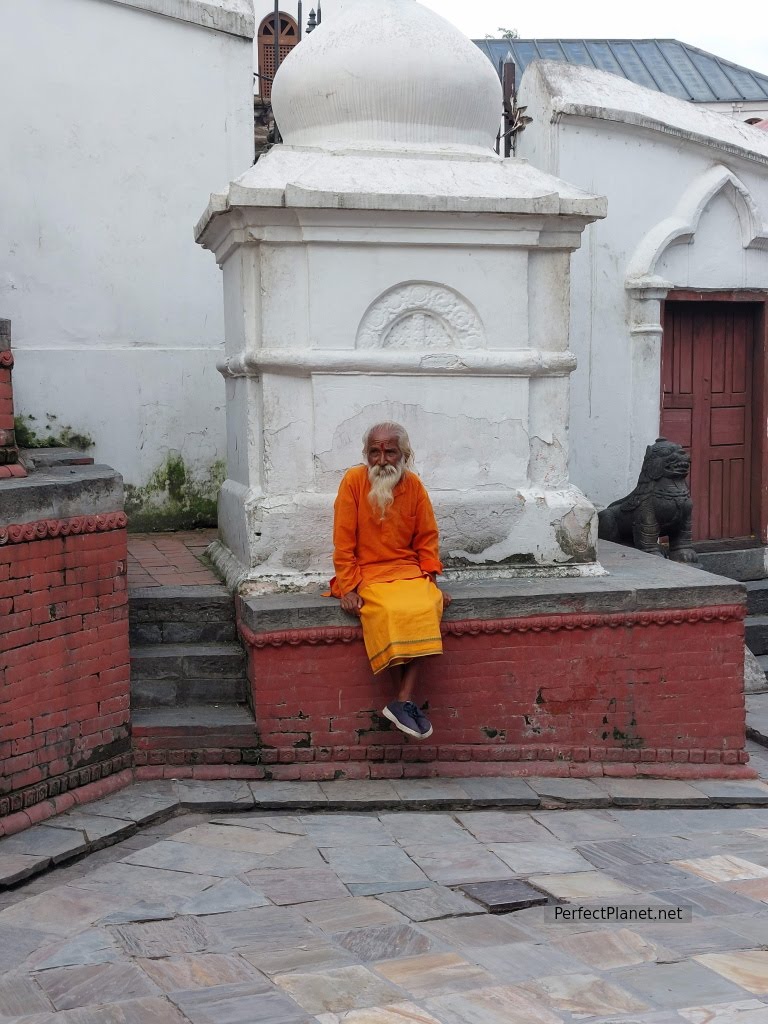
Pashupatinath
Breakfast in Lukla at Yak Hotel, included, eggs with toast.
Lunch at Fresh Bake 350 rupees / 2 pax, brutal everything
Accommodation at Shine Homestay Famille Francophone - Shine Home and Apartment 16$/night, double room with bathroom and terrace.
Taxi from our hostel to Boudhanatha 500 Rupees
Entrance to Boudhanatha Temple 400 rupees/pax
Lunch in Kathmandu at Khasyor cafe rooftop view, momos, soft drink and water 550 rupees
Entrance fee to Pashupatinath Temple 1,000 rupees/pax
Taxi from Pashupatinath to Thamel 500 rupees
Dinner 1,200 rupees Gaia restaurant, humus, chicken wings and mint tea
- Log in to post comments

